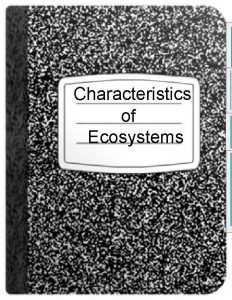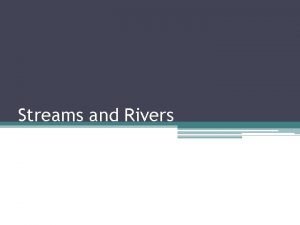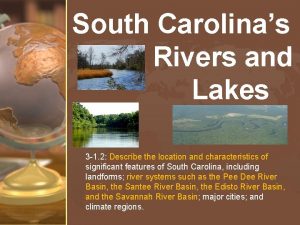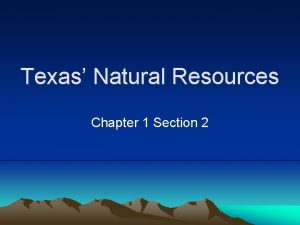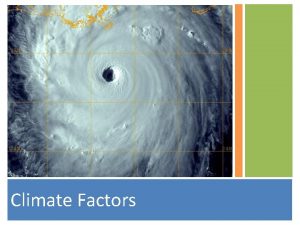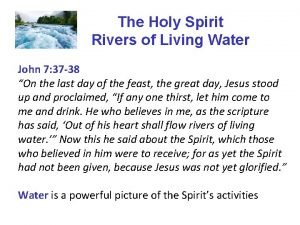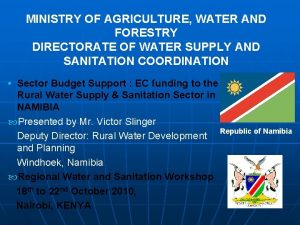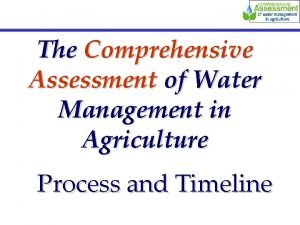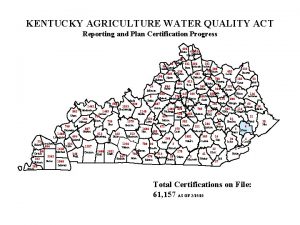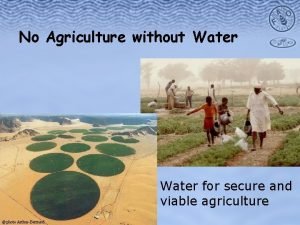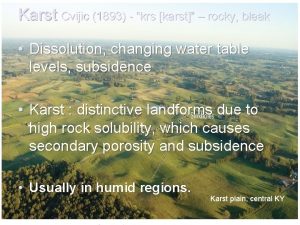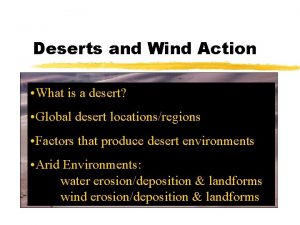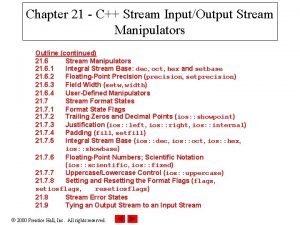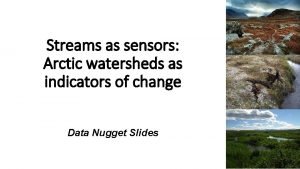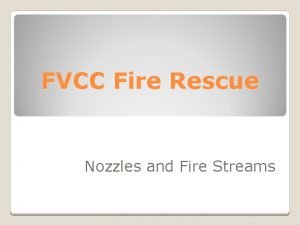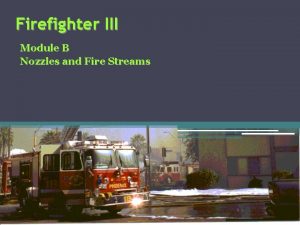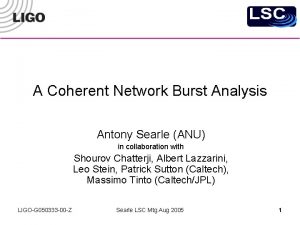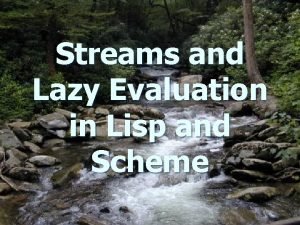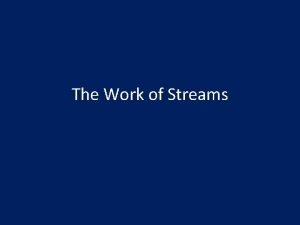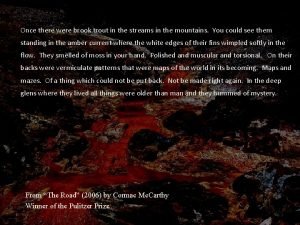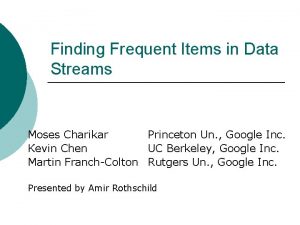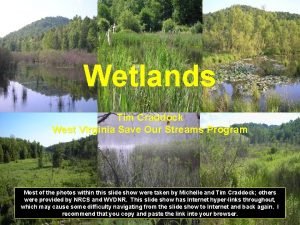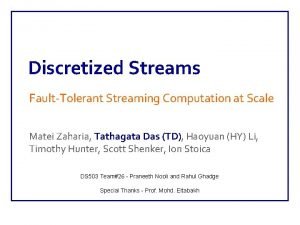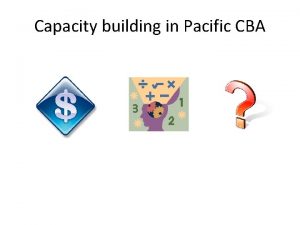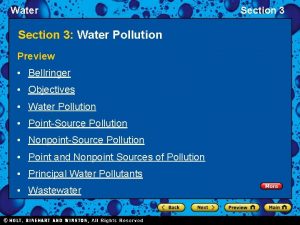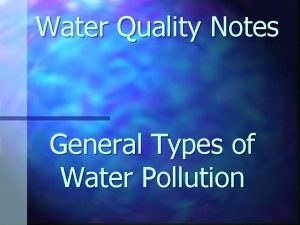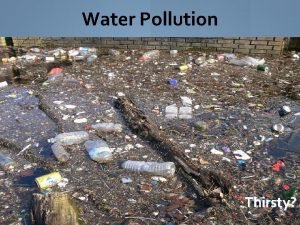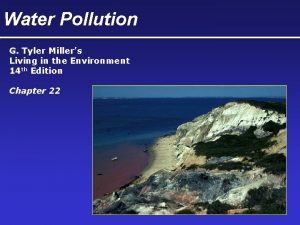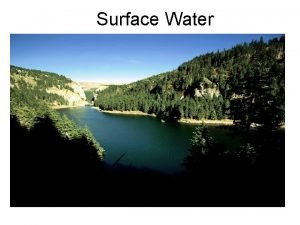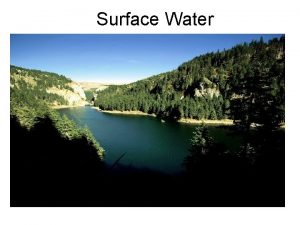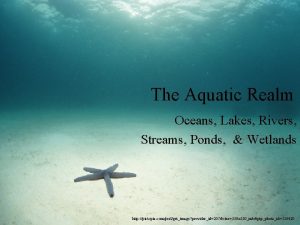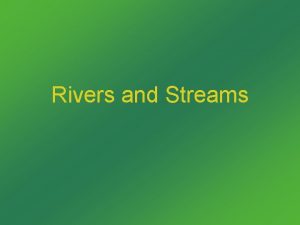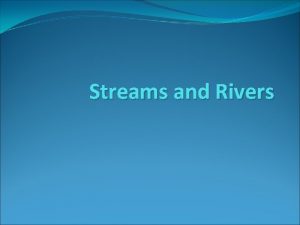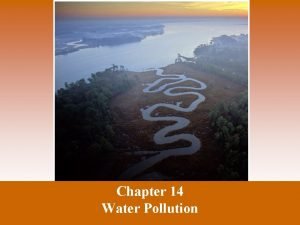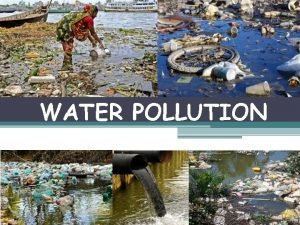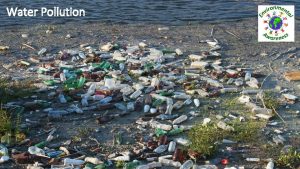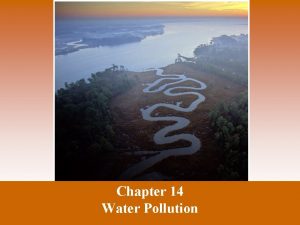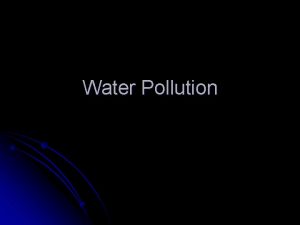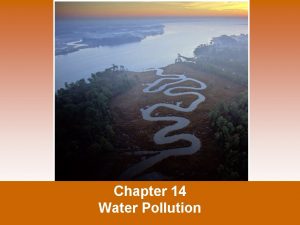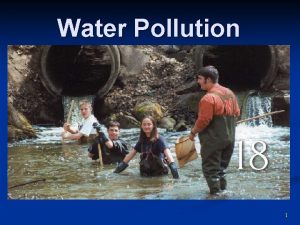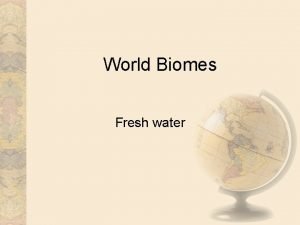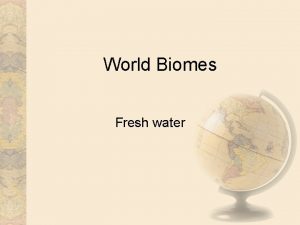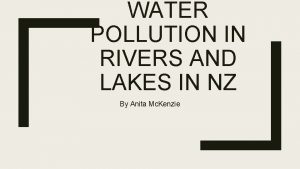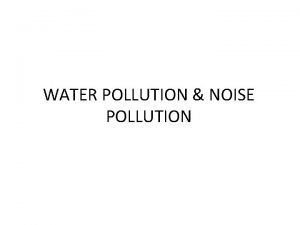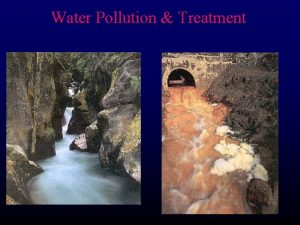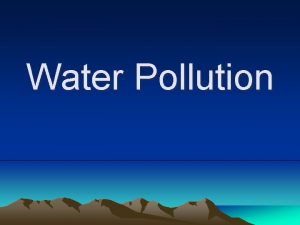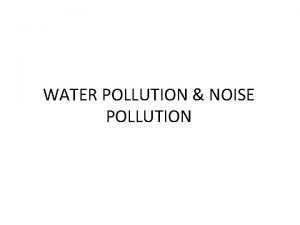Water Pollution Oceans Rivers Streams Lakes Agriculture is

















































- Slides: 49

Water Pollution Oceans, Rivers, Streams & Lakes

Agriculture is the LEADING cause of water pollution! Sources of agricultural pollution include: ◦ ◦ ◦ Eroded sediment Excess nitrogen and phosphorus from fertilizers Pesticides Animal waste Salt from over-irrigated areas

Industry and Mining Industrial factories contribute to water pollution by emitting chemicals into the water Mining creates erosion which releases sediment and toxic chemicals into the water

Causes of Ocean Pollution 80% of marine pollution originates on land Dumping of untreated waste – largely by developing countries ◦ China’s coastline – large areas along the coastline can no longer support marine ecosystems due to algal blooms Cruiseliners Boats River Pollution

The Rubber Duck Experiment


What we learned: All oceans are connected Ocean pollution is a world-wide issue, not a local issue

The Great Pacific Garbage Patch

Case Study: National Geographic images Message in the Waves Proposed Solution

Dead Zones Aquatic zone with low dissolved oxygen ◦ Few fish and bottom dwellers ◦ Abundant decomposing bacteria ◦ Caused by cultural eutrophication ◦ Cultural Eutrophication – human caused eutrophication (fertilizer runoff, waste from ranches, deposition of nitrogen compounds from the atmosphere)

Oil Pollution in the Ocean Oil Spills ◦ Exxon Valdez ◦ Gulf Oil Spill ◦ Large oil spills get much publicity, but more oil is spilled into the ocean annually through land runoff from pipeline and refinery leaks than from most accidents ◦ Refined Oil is much harder to clean up than Crude Oil

Oil Spill Clean-up Crude Oil – marine life usually recovers in about 3 years ◦ Clean-up usually recovers about 15% of spilled oil Floating booms, skimmer boats, feathers & hair, bacteria Refined Oil – marine life can take up to 10 -20 years to recover

BP Gulf Oil Spill

The Facts April 20, 2010 An oil rig off of the coast of Louisiana had an explosion which ruptured a pipe resulting in the release of approximately 4 million barrel of oil into the Gulf of Mexico It took 87 days to stop the spill 11 workers died in the explosion Deep Horizon Explosion

The area covered

Effects of the spill Wildlife populations were immediately impacted Much of the oil is still in the Gulf Food chains were disrupted Corals died that were covered in the oil

Why it could have been worse: The spill occurred in shallow waters Crude Oil Warm waters Rescue teams and funds nearby

BP Gulf Oil Spill


The Exxon Valdez Oil Spill

March 24, 1989 The Exxon Valdez cargo tanker struck a reef in Prince William Sound releasing 11 million barrels of oil

Difficulties of clean-up Remote area - accessible by boat or helicopter only Extremely cold water = hazardous to rescue workers High biodiversity – millions of animals died


Recovery

What happened to Captain Hazelwood? Although tests confirmed that Hazelwood was legally drunk per blood tests taken 10 hours after the crash, lawyers argued mis-testing Captain Hazelwood was fired by Exxon Final Sentence - $50, 000 fine and 1, 000 hours of community service

In the aftermath of the Exxon Valdez incident, Congress passed the Oil Pollution Act of 1990, which required the Coast Guard to strengthen its regulations on oil tank vessels and oil tank owners and operators.

River Pollution According to the WHO, Half of the world’s rivers are polluted!! Most of these rivers run through developing countries

Cuyahoaga River - Ohio � June 22, 1969 � Sparks from a passing train ignited the river � It was so full of oil and other pollutants that the river caught fire � Fires also occurred in 1868, 1883, 1887, 1912, 1922, 1936, 1941, 1948 and 1952

http: //www. cleveland. com/science/index. ssf/2009/06/cuyahoga_river_fire_40_years_a. html

� Source: NOAA. gov

Clean Water Act of 1972 ◦ Commercial and municipalities must file a permit before dumping waste into water ◦ Establishes pollutant levels ◦ Provides funds to monitor and enforce compliance ◦ Provides restoration and support of aquatic life areas

China’s rivers Figure 21 -5

The Ganges River - India

The Ganges River – a river of vital importance Religious Importance: Hinduism is the primary religion in India Hindis believe that to achieve after-life and break the cycle of being reborn on earth, the body must be freed in the Ganges River Many hindu people pilgrimage to the river to bath in it Daily use of the river includes bathing, drinking, laundry, swimming

Ganges River Slideshow Importance of the Ganges to India http: //photography. nationalgeographic. com/photography/e nlarge/ganges-bathers_pod_image. html

Polluted water The Ganges is polluted by many things including: Ganges River Pollution slide show

Groundwater Pollution Common groundwater pollutants: ◦ ◦ Fertilizers Pesticides Gasoline Organic Solvents

Aquifer pollutants Aquifer Pollution animation Obstacles to natural clean-up ◦ Low DO levels = low number of decomposing bacteria ◦ Cold temperatures = slower chemical reactions ◦ Result = may take thousands of years for groundwater to cleanse itself of the pollutants!

Can we clean the aquifers? Solutions ◦ Pump the water to the surface, clean and return – EXPENSIVE! ◦ Inject microorganisms into aquifer ◦ Nanoparticles of inorganic compounds pumped into aquifers (still in development) ◦ A more feasible solution is to purify the drinking water rather than the aquifer itself ◦ Lifesaver Bottle ◦ Lifestraw

Infectious Disease can also be spread through the water. Common infectious diseases: ◦ ◦ ◦ Typhoid Fever Cholera Dysentery Enteritis Hepatitis B Giardia

Water Sanitation � Treatment of water before it is discharged into rivers or oceans Not all water is treated before being released!

Reducing Water Pollution through Sewage Treatment • Septic tanks and various levels of sewage treatment can reduce point-source water pollution. Figure 21 -15

Reducing Water Pollution through Sewage Treatment Primary and Secondary sewage treatment. Figure 21 -16





Point vs. Nonpoint sources Point Source: pollution is discharged from a specific location – drainpipe, ditch, sewer line, factories, oil tankers Nonpoint Source: pollution is discharged from a broad area – runoff, parking lots, streets

Pollution in Streams and Lakes Oxygen Sag Curve
 Bill nye rivers and streams answers
Bill nye rivers and streams answers Streams and rivers abiotic factors
Streams and rivers abiotic factors South carolina rivers and lakes
South carolina rivers and lakes Why are some rivers in texas called “wrong way” rivers?
Why are some rivers in texas called “wrong way” rivers? Water and water and water water
Water and water and water water Water oceans
Water oceans Holy spirit living water
Holy spirit living water Lateral thinking brain teasers
Lateral thinking brain teasers Ministry of agriculture, water and forestry directorates
Ministry of agriculture, water and forestry directorates Comprehensive assessment of water management in agriculture
Comprehensive assessment of water management in agriculture Kentucky agriculture water quality plan
Kentucky agriculture water quality plan Agriculture without water
Agriculture without water Youtube
Youtube Cost streams
Cost streams Streams aq: waiting for messages in the queue
Streams aq: waiting for messages in the queue Karst topography
Karst topography Flywhisk meaning
Flywhisk meaning Sand dune migration
Sand dune migration Streams in c++
Streams in c++ Data nugget streams as sensors answers
Data nugget streams as sensors answers Physical states
Physical states 3 types of fire streams
3 types of fire streams Oracle streams
Oracle streams Basic concepts in mining data streams
Basic concepts in mining data streams A framework for clustering evolving data streams
A framework for clustering evolving data streams Streams anu
Streams anu Concept of streams
Concept of streams Stream lazy evaluation
Stream lazy evaluation In chemical dehumidification process
In chemical dehumidification process Predefined streams in java
Predefined streams in java Gradient definition earth science
Gradient definition earth science Most streams carry the largest part of their load
Most streams carry the largest part of their load Once there were brook trout in the streams in the mountains
Once there were brook trout in the streams in the mountains Wild swans at coole techniques
Wild swans at coole techniques Disappearing streams karst topography
Disappearing streams karst topography Vvvnn
Vvvnn Finding frequent items in data streams
Finding frequent items in data streams Value proposition canvas for airlines
Value proposition canvas for airlines Tim craddock
Tim craddock Example of business model canvas
Example of business model canvas Perforce virtual streams
Perforce virtual streams Perforce virtual streams
Perforce virtual streams Discretized streams
Discretized streams Cba streams
Cba streams There's a place where streams of grace
There's a place where streams of grace The zone of aeration
The zone of aeration Section 3 water pollution
Section 3 water pollution Type of reefs
Type of reefs Three source of water
Three source of water What are the terrible twelve water pollution
What are the terrible twelve water pollution
